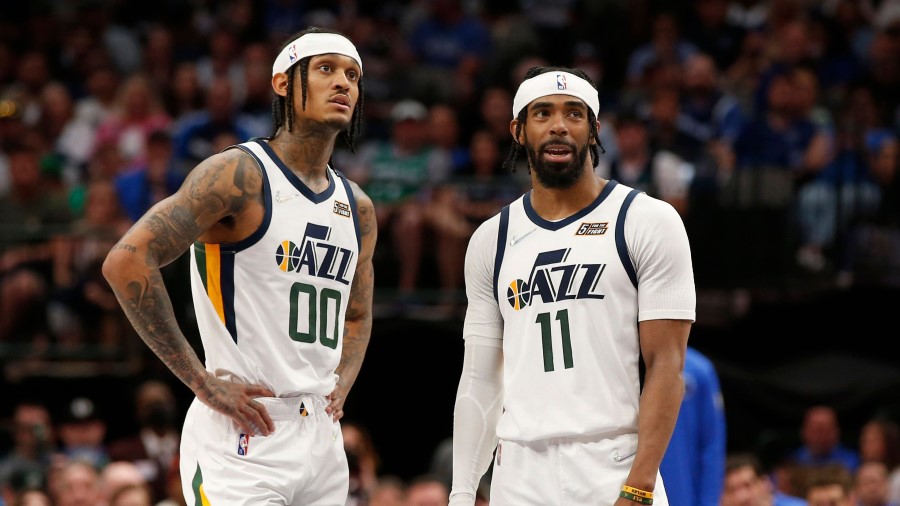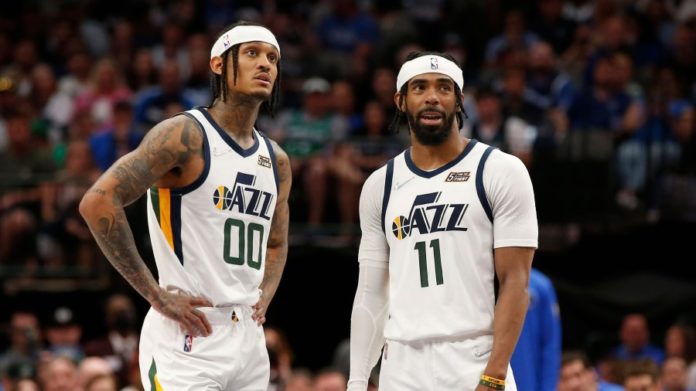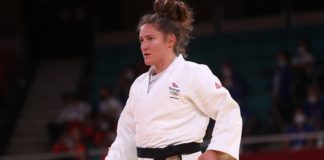
SALT LAKE CITY – The Utah Jazz offseason roster makeover has been on hold largely due to the trade rumors surrounding Donovan Mitchell, and rightfully so.
Until the Jazz move Mitchell, an outcome that seems inevitable at this point, filling out the roster is a difficult proposition.
Though no deal is imminent, what the Jazz get in return for the All-Star guard will determine how they proceed with finalizing the 2022-23 roster.
The Jazz could prefer a trade package similar to what they got back from the Minnesota Timberwolves in exchange for Rudy Gobert that saw five mid-level rotation players return to Utah, or they could pursue a trade for a higher-end roster player, with only one or two additional players included to make salaries work.
Where those incoming players fit could determine how much work is left for Danny Ainge, Justin Zanik, David Fizdale, and owner Ryan Smith when constructing the roster before training camp begins next month.
But as it stands, the Jazz are far from a finished product and there’s a significant amount of work to do before the season starts.
Before getting into the movesJazz’st need to be made, here’s a look at the Jazz current roster some 50 days out from players reporting to camp.
Jazz Current Roster:
PG: Mike Conley/Patrick Beverley/Jared Butler
SG: Donovan Mitchell/Jordan Clarkson/Malik Beasley/Nickeil Alexander-Walker
SF: Bojan Bogdanovic/Simone Fontecchio/Leandro Bolmaro
PF: Jarred Vanderbilt/Rudy Gay
C: Udoka Azubuike/Walker Kessler
Two-Way: Johnny Juzang
As it stands, the Jazz have 14 players under traditional contracts, with rookie Johnny Juzang filling one of their two two-way roster spots. The NBA requires teams to carry a minimplayers13 players and no more than 15 roster player, excluding two-way contracts, meaning the Jazz could hold into his roster into gular season if they desired.
But, a quick glance at the team’s depth chart reveals the numerous flaws on the roster that will need to be addressed in the coming weeks.
First, as currently constituted the Jazz are caught in the no man’s land that is the middle class of the NBA. Between the veteran experience of Mike Conley, Parick Beverley, Jordan Clarkson, Malik Beasley, Bojan Bogdanovic, and Jarred Vanderbilt, the Jazz simply have too much talent to lose the number of games required to earn one of the top picks in next year’s NBA Draft.
Notice, there’s no mention of Mitchell in that group of veterans.
If we were to add the three-time All-Star to the previous list, they’re good enough to earn 40+ wins, and finish well within the Western Conference Playoff picture, but not high enough to compete for anything truly meaningful.
While some perennial cellar-dwellers might salivate at the idea of qualifying for the NBA play-in tournament, it would be a hindrance to the Jazz pending rebuild.
Beyond winning too many games, however, is the lopsided construction of the team’s current roster.
The Jazz are heavy with rotation-level players at their two backcourt positions, and extremely light in the frontcourt.
Between Conley, Beverley, Mitchell, Clarkson, and Beasley, the Jazz have five players on the roster who each played 25 minutes per game last season.
While one solution could be to simply drop the minutes of two of the players, those affected may not be happy with a sudden reduction in playing time while still in the midst of the most productive years of their careers. Furthermore, the Jazz will want to keep those players’ trade value high by showing off their production if they remain on the roster next season.
Additionally, it just so happens those players sit in front of Jared Butler and Nickeil Alexander-Walker on the depth chart. Though neither Butler nor Alexander-Walker has proven they are worthy of a long-term investment through a rebuild, the Jazz would likely prefer to see what each player can offer with real NBA playing time.
Simply put, the Jazz have too much talent in the backcourt to tank, and too few minutes to get everyone on the court. As a result, the team would benefit from thinning out the roster as their deepest positions.
On the flip side, the frontcourt is having the opposite problem.
Even with the addition of Vanderbilt in the Gobert trade, the Jazz are stunningly thin at forward and center.
Bojan Bogdanovic played the most minutes of anyone in the Jazz frontcourt last season averaging just a hair under 31 minutes per game. Drop in Vanderbilt’s 25 minutes, and the roughly 20 minutes from Rudy Gay and the Jazz have around 75 the required 144 game minutes in the frontcourt.
Rookie Walker Kessler will get an ample share of the minutes, as will third-year center Udoka Azubuike, but neither of the Jazz two centers has proven they can play significant minutes in the NBA.
Rookie Simone Fontecchio and second-year forward Leandro Bolmaro will also see the floor, but what they offer and how much they can play remains to be determined.
Even if the Jazz aren’t all that interested in winning games next season, they do need to field a roster that’s capable of playing a full 240 minutes. As of the beginning the August, the frontcourt’s ability to carry its share of those minutes is in question.
How Will The Jazz Finish The Offseason?
As mentioned, how the Jazz will finish the roster depends on what return they get in the Mitchell trade.
For example, in one rumored trade with the New York Knicks, the Jazz would get a collection of four young players including Quentin Grimes, Miles McBride, Obi Toppin, and Immanuel Quickley.
While Toppin would give the Jazz an additional 25 minutes in the frontcourt, they’d find even more of a logjam in the backcourt by adding Grimes, McBride, and Quickley.
Another rumored deal would send Mitchell to the Toronto Raptors for OG Anunoby and Gary Trent Jr. While there are fewer players in this trade, the Jazz would again be too competitive to tank, and would add yet another veteran body to the backcourt.
Ultimately, there remain too many unknowns in any eventual Mitchell trade for the Jazz front office to take a serious stab at rounding out the roster until it’s complete.
The Jazz could make more moves like the Royce O’Neale trade that returned only a future draft pick, deals they’ve certainly explored for the veterans remaining on the roster. And, they could sign other under-the-radar players like Fontecchio whose NBA timeline matches the team’s upcoming rebuild.
But, until Mitchell is moved, the Jazz offseason remains in a holding pattern, despite the significant amount of work that must be finished before training camp begins.







